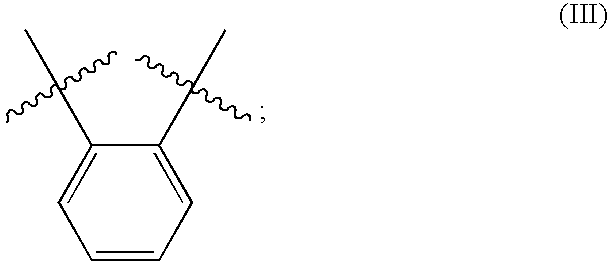Process for styling dyed hair and inhibiting its color loss during shampooing
a dyeing hair and dyeing technology, applied in the field of dyeing hair dyeing process, can solve the problems of hair styling compositions that are disadvantageously designed to not allow hair to be fixed in a shape, not designed to maintain the initial shape of the hairstyle, and the phenomenon of color bleeding during shampooing is still non-negligible, so as to reduce the degree of color loss
- Summary
- Abstract
- Description
- Claims
- Application Information
AI Technical Summary
Benefits of technology
Problems solved by technology
Method used
Image
Examples
example 1
Effectiveness of Polyamine / Anionic Silicone / Film Former Solutions as Leave on Treatments
[0073] Bleached hair swatches were dyed with Redken HiFusion R, with application duration of 30 minutes and rinsed with water for 1 minute. Then 1 g of the polyamine / anionic silicone / film former mixture per gram of hair was applied to the colored swatches, distributed thoroughly throughout the swatch, then the swatch was blow-dried until completely dry. A total of five swatches were tested for each treatment. The initial L value of the hair swatches was then taken. The L value indicates lightness / darkness of the color being read. The higher number indicates lighter color. The treated hair swatches were shampooed with 0.5g of 10% SLES solution (pH 6.27) / g hair for 30 seconds then rinsed for 10 seconds under running water. This was repeated for a total of 6 shampoos. The hair was then blow-dried, and the final L value was taken. The change in L value was calculated. The higher in the change in L ...
example 2
Effectiveness of Shampoo Containing Polyamine / Anionic Silicone / Film Former
[0076] Bleached hair swatches were dyed with Redken HiFusion R, with application duration of 30 minutes and rinsed with water for 1 minute. The colored swatch was blow-dried and the initial L value of the hair swatches was then taken. The L value indicates lightness / darkness of the color being read. The higher number indicates lighter color. The hair swatches were treated with the shampoo (0.5 g of shampoo / g hair) for 30 seconds then rinsed for 10 seconds under running water. This was repeated for a total of 10 shampoos. After 3 shampoos, 6 shampoos and 10 shampoos, the treated hair swatches were blow-dried, and the final L value was taken. The change in L value was calculated. The higher in the change in L the more color loss after shampooing.
[0077] The following polyamine / anionic silicone / film former shampoo were used:
EFPolyethyleneimine2—Ultrasil PE-1000.5—Amphomer LV-71 (neutralized to 100% with AMP)1—...
PUM
| Property | Measurement | Unit |
|---|---|---|
| Fraction | aaaaa | aaaaa |
| Percent by mass | aaaaa | aaaaa |
| Percent by mass | aaaaa | aaaaa |
Abstract
Description
Claims
Application Information
 Login to View More
Login to View More - R&D
- Intellectual Property
- Life Sciences
- Materials
- Tech Scout
- Unparalleled Data Quality
- Higher Quality Content
- 60% Fewer Hallucinations
Browse by: Latest US Patents, China's latest patents, Technical Efficacy Thesaurus, Application Domain, Technology Topic, Popular Technical Reports.
© 2025 PatSnap. All rights reserved.Legal|Privacy policy|Modern Slavery Act Transparency Statement|Sitemap|About US| Contact US: help@patsnap.com



